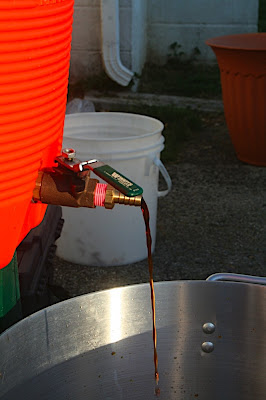hal2814
Well-Known Member
The No Chill threads have been interesting to me. It's the way I have brewed for years now. I never knew it to be controversial until reading the forums here. There are many questions about the process and its effects on the finished product.
While cleaning out my basement this weekend, I ran across an unopened bottle from an no chill IPA batch I bottled over a year and a half ago. It's been sitting in a cardboard box at room temperature in my basement since a Christmas party I went to back in 2007. I thought the entire box was empties but apparently there was the one bottle left. That's a lot older than any beer I've ever tried to drink but it has an Oxycap on it so I'm hoping I can at least get a flavor profile. I know some of the no chill questions specifically concerned bottled beer vs. kegged and the effects of no chill on long term storage so I thought this a good opportunity to explore those questions.
The plan is to gather a photo diary of the characteristics of the no chill beer. I want to get suggestions of what to look for since I'll only have one shot at this. Here is my proposed report layout (condensation will be wiped before each shot):
1. Basics of the batch from my notebook. This would include everything from recipe to bottling.
2. Photo of the bottle as it was found (at room temperature).
3. Photo of the unopened bottle at ~= 38F (my beer fridge temperature).
4. Photo of the initial pour.
5. Photo of the settled pour.
6. A brief description of the flavor profile. (If I should be looking for specific off flavors, this would be the place to point out what I'm looking for.)
It's important to note that I don't have a dog in this fight. My method of brewing is a no chill method and it works for me. I don't really care if the beer develops a chill haze and I don't really care if the beer has some off-flavor that developed between the time the beer was drinkable and a year-and-a-half later. I've never really paid attention to that sort of thing and have no plans to start doing so now. It also doesn't particularly bother me that my brew method isn't THE WAY.
I'll mention it in the official findings but it's also important to note that one study does constitute conclusive evidence, especially when there is no control group to compare to. I'm hoping the thread doesn't devolve to discussions on how the results are inconclusive. We already know that. I just don't want to miss out on a chance to study an aspect of the no chill method that is pretty hard (for me at least) to come by. I am typically a kegger and I sure don't typically have beer lying around too long after it is drinkable. And since there is a debate, I thought it a good idea to share my findings.
This evening I have a few obligations to attend to so Tuesday will be the earliest I can collect the results. Suggestions on what and how to report my findings to make them as useful as possible are welcome.
EDIT: Results are in!
1. Here's the recipe entry for the IPA in this study. I halved the Northern Brewer to 1oz and did the 1/2oz Cascade that is 1 minute in the recipe as a dry hop in primary on day 6 when I noticed the krausen fall. I put it on BeerTools back in 2003 and have brewed it 3 or 4 times. I rarely take an OG on a beer I've done before but the FG was 1.02. It was in primary for 10 days, cold crashed for 2 days at about 38F (my usual beer fridge temp), and then bottled. It hit FG at day 6 and stayed there until the cold crash.
As for the no chill-specific info, it was brewed October 13, 2007. I didn't note the outside temperature at the time, but according to the NWS archives, the high and low were 76 and 45, respectively, in my area. Brewing wrapped up some time after 9PM that night and the yeast was pitched from a 1.5 qt starter the next day some time in the afternoon.
2. 7/13/2009 12PM EST room temperature:
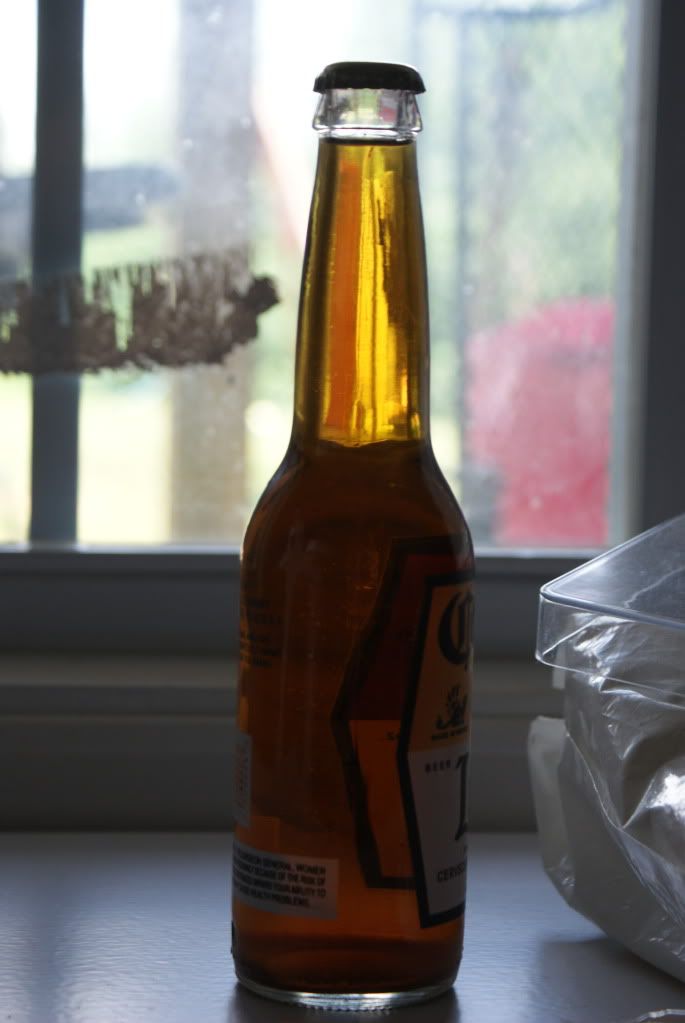
3. 7/14/2009 12PM EST 37F (according to meat thermometer in fridge):
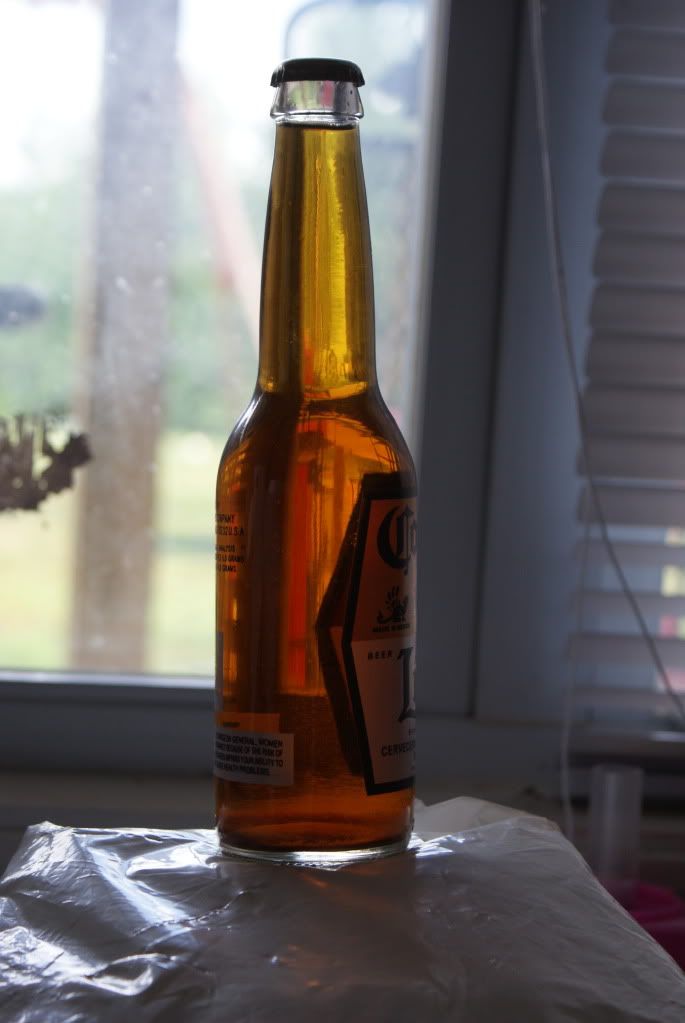
4. 7/14/2009 9:30PM 38F (same thermometer):
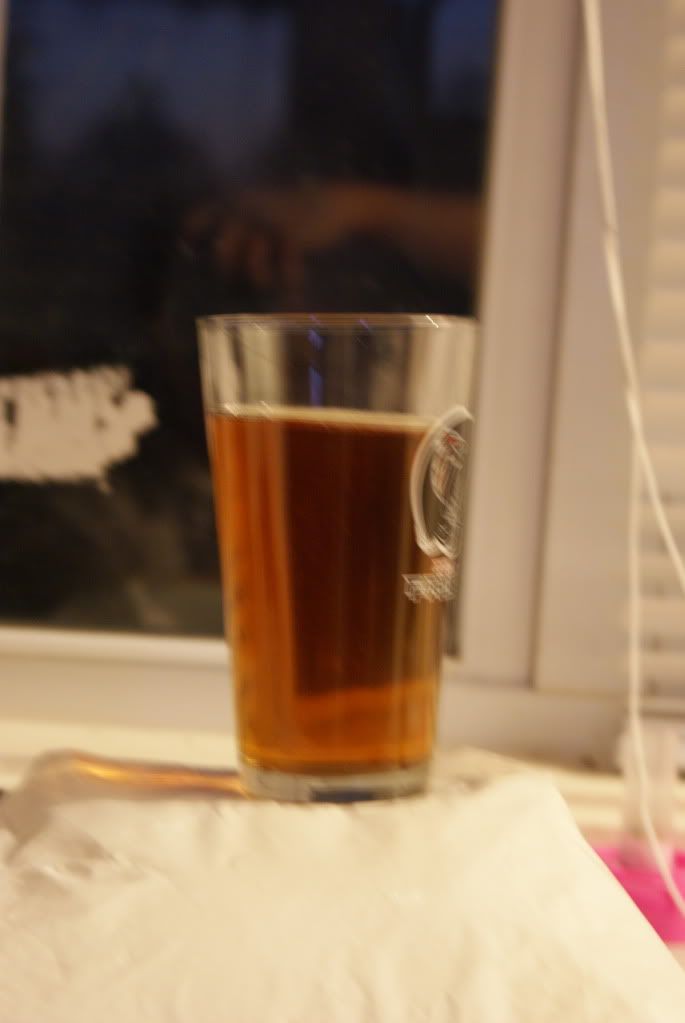
5. There was nothing to settle. The beer was flatter than flat. Since I didn't experience flatness anywhere else in the batch, I assume I just didn't get a good enough seal. Or maybe the oxycap didn't do its job? But to fill out the profile, here's another pic after it "settled":
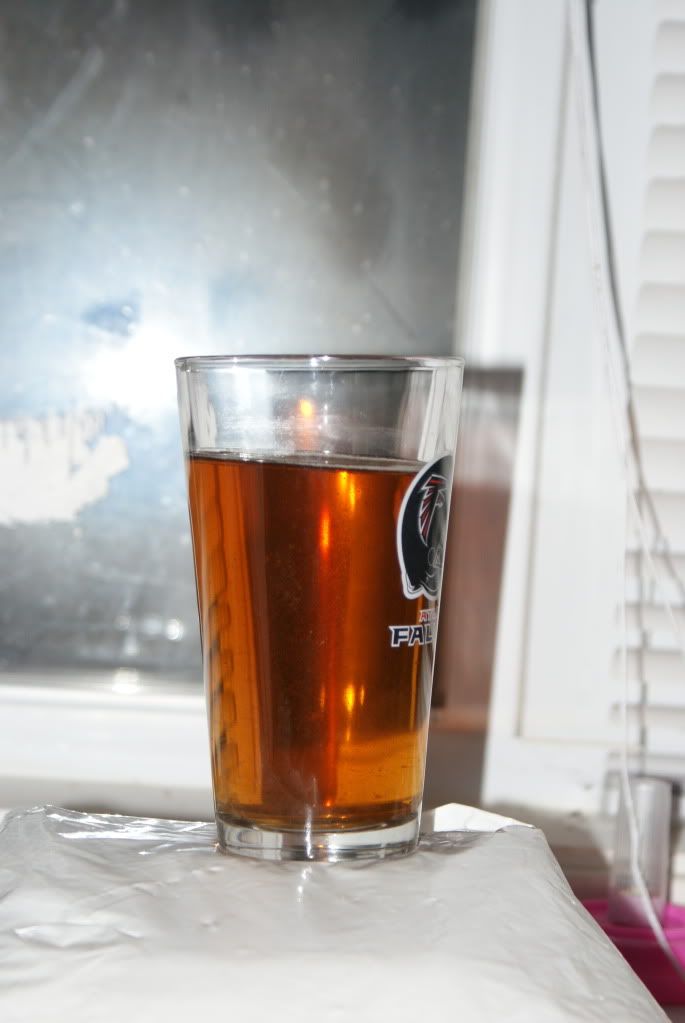
6. I took a swig of flat year-and-a-half old beer for the team. To paraphrase Clubber Lang, what did i expect from this beer? PAIN! It was all cardboard. I never really understood what was meant by "cardboard" until tonight. The hops were gone. The malt was gone. No creamed corn. Just cardboard.
So there you have it. My beer is old and has gone bad long ago. But there's no chill haze. The appearance-is-important crowd should be proud.
While cleaning out my basement this weekend, I ran across an unopened bottle from an no chill IPA batch I bottled over a year and a half ago. It's been sitting in a cardboard box at room temperature in my basement since a Christmas party I went to back in 2007. I thought the entire box was empties but apparently there was the one bottle left. That's a lot older than any beer I've ever tried to drink but it has an Oxycap on it so I'm hoping I can at least get a flavor profile. I know some of the no chill questions specifically concerned bottled beer vs. kegged and the effects of no chill on long term storage so I thought this a good opportunity to explore those questions.
The plan is to gather a photo diary of the characteristics of the no chill beer. I want to get suggestions of what to look for since I'll only have one shot at this. Here is my proposed report layout (condensation will be wiped before each shot):
1. Basics of the batch from my notebook. This would include everything from recipe to bottling.
2. Photo of the bottle as it was found (at room temperature).
3. Photo of the unopened bottle at ~= 38F (my beer fridge temperature).
4. Photo of the initial pour.
5. Photo of the settled pour.
6. A brief description of the flavor profile. (If I should be looking for specific off flavors, this would be the place to point out what I'm looking for.)
It's important to note that I don't have a dog in this fight. My method of brewing is a no chill method and it works for me. I don't really care if the beer develops a chill haze and I don't really care if the beer has some off-flavor that developed between the time the beer was drinkable and a year-and-a-half later. I've never really paid attention to that sort of thing and have no plans to start doing so now. It also doesn't particularly bother me that my brew method isn't THE WAY.
I'll mention it in the official findings but it's also important to note that one study does constitute conclusive evidence, especially when there is no control group to compare to. I'm hoping the thread doesn't devolve to discussions on how the results are inconclusive. We already know that. I just don't want to miss out on a chance to study an aspect of the no chill method that is pretty hard (for me at least) to come by. I am typically a kegger and I sure don't typically have beer lying around too long after it is drinkable. And since there is a debate, I thought it a good idea to share my findings.
This evening I have a few obligations to attend to so Tuesday will be the earliest I can collect the results. Suggestions on what and how to report my findings to make them as useful as possible are welcome.
EDIT: Results are in!
1. Here's the recipe entry for the IPA in this study. I halved the Northern Brewer to 1oz and did the 1/2oz Cascade that is 1 minute in the recipe as a dry hop in primary on day 6 when I noticed the krausen fall. I put it on BeerTools back in 2003 and have brewed it 3 or 4 times. I rarely take an OG on a beer I've done before but the FG was 1.02. It was in primary for 10 days, cold crashed for 2 days at about 38F (my usual beer fridge temp), and then bottled. It hit FG at day 6 and stayed there until the cold crash.
As for the no chill-specific info, it was brewed October 13, 2007. I didn't note the outside temperature at the time, but according to the NWS archives, the high and low were 76 and 45, respectively, in my area. Brewing wrapped up some time after 9PM that night and the yeast was pitched from a 1.5 qt starter the next day some time in the afternoon.
2. 7/13/2009 12PM EST room temperature:

3. 7/14/2009 12PM EST 37F (according to meat thermometer in fridge):

4. 7/14/2009 9:30PM 38F (same thermometer):

5. There was nothing to settle. The beer was flatter than flat. Since I didn't experience flatness anywhere else in the batch, I assume I just didn't get a good enough seal. Or maybe the oxycap didn't do its job? But to fill out the profile, here's another pic after it "settled":

6. I took a swig of flat year-and-a-half old beer for the team. To paraphrase Clubber Lang, what did i expect from this beer? PAIN! It was all cardboard. I never really understood what was meant by "cardboard" until tonight. The hops were gone. The malt was gone. No creamed corn. Just cardboard.
So there you have it. My beer is old and has gone bad long ago. But there's no chill haze. The appearance-is-important crowd should be proud.


